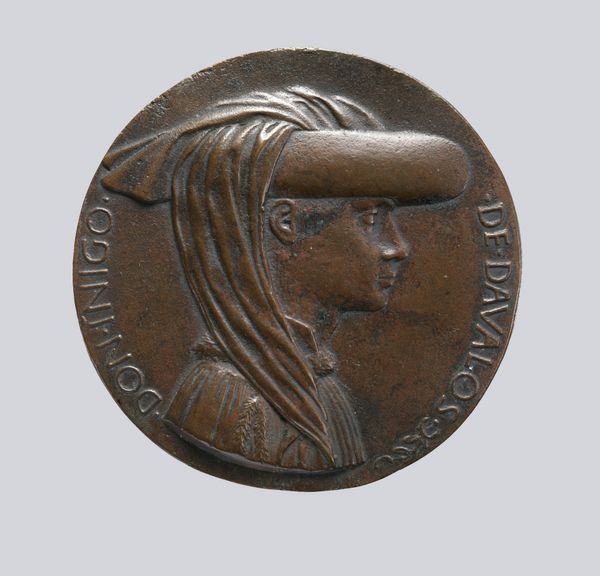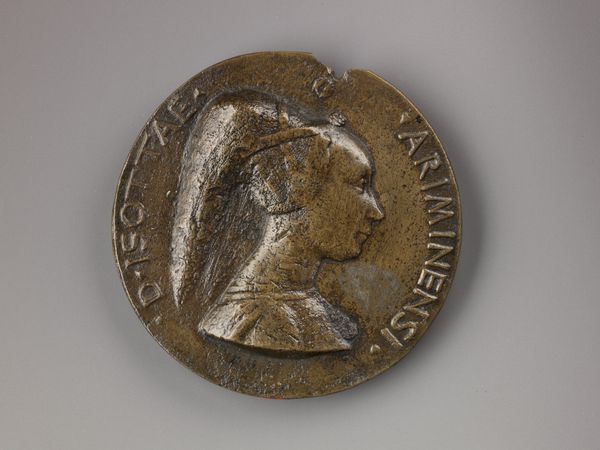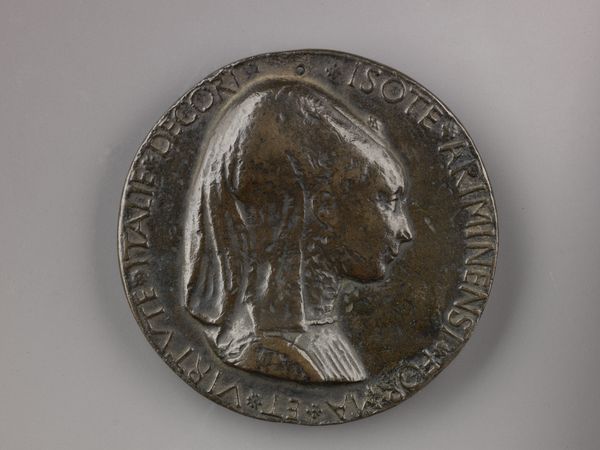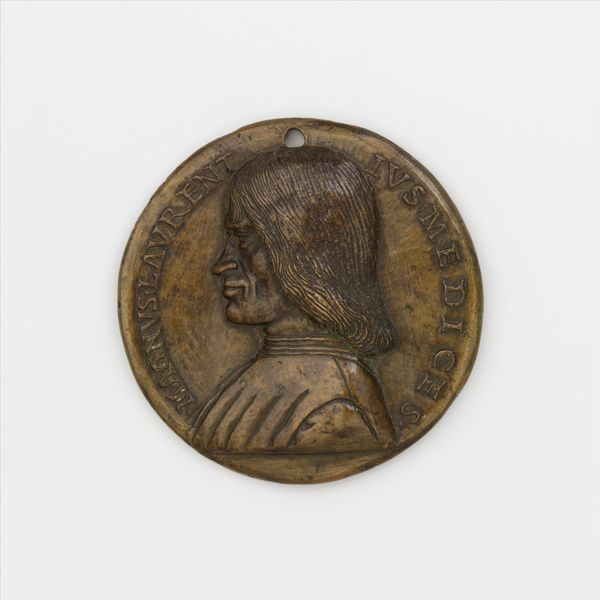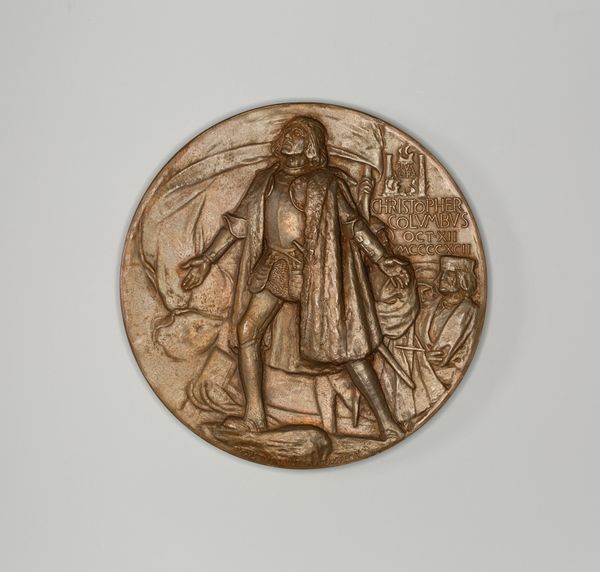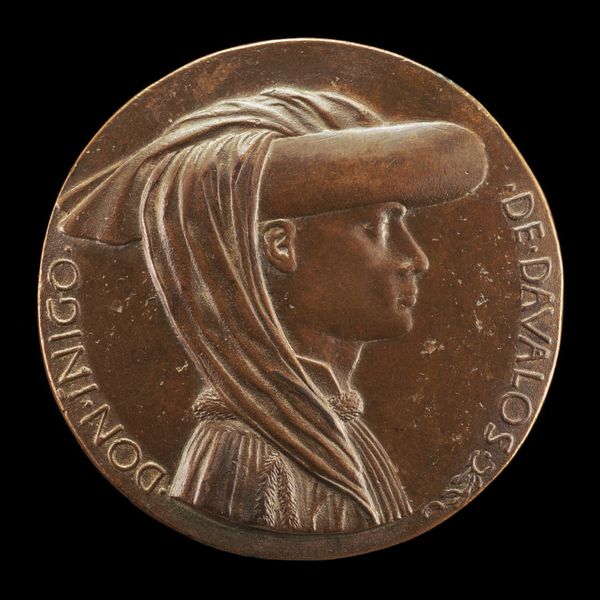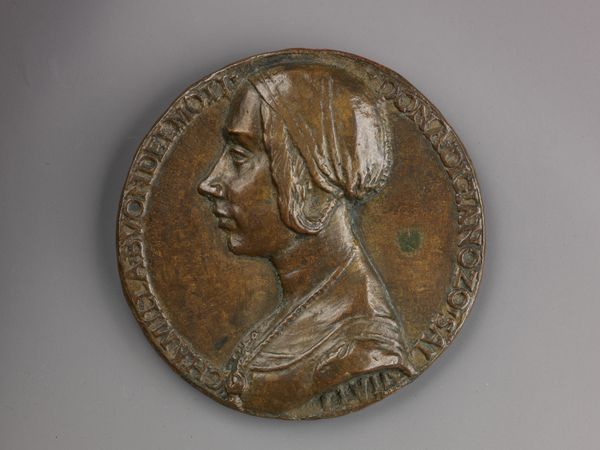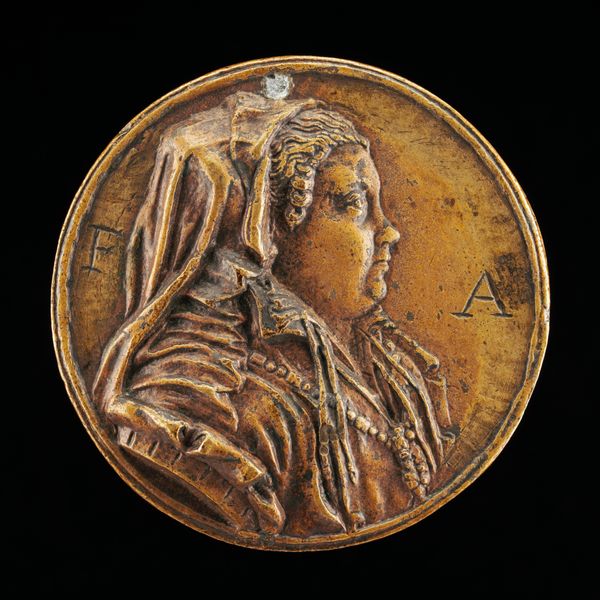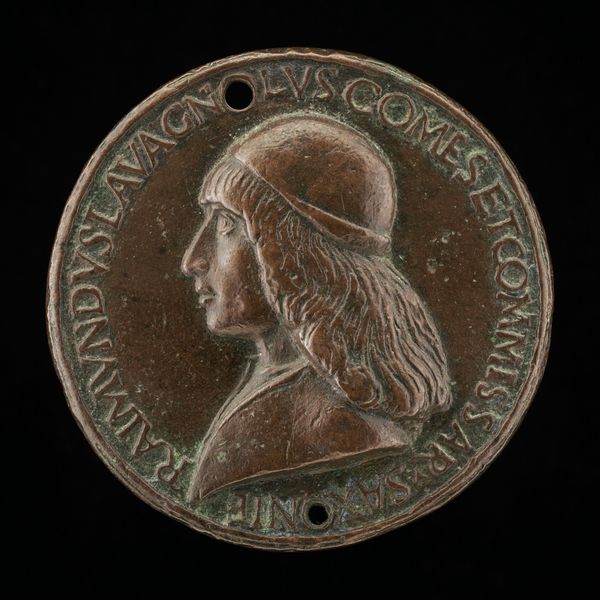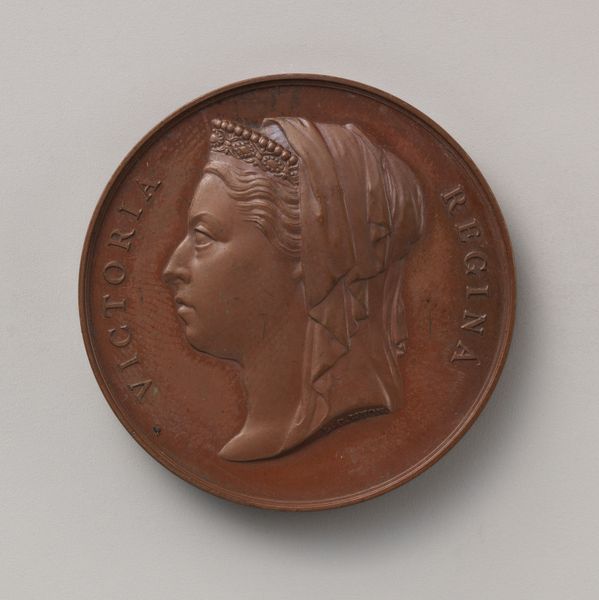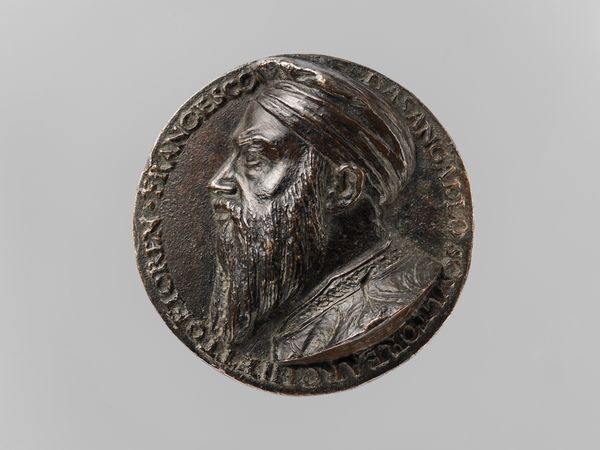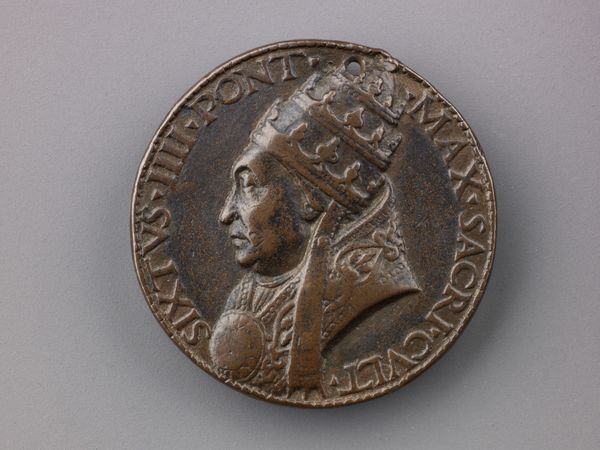
relief, bronze, sculpture
#
portrait
#
medal
#
sculpture
#
relief
#
bronze
#
sculpture
#
italian-renaissance
Dimensions: Diam. 7.7 cm, wt. 145.88 g.
Copyright: Public Domain
This bronze medal of Don Inigo d'Avalos was created by Pisanello, around the mid-15th century. It’s a relatively small object, but carries significant weight, both literally and figuratively. The medal-making process involved several steps. First, a model was sculpted, likely in wax or clay. This would then be used to create a mold, into which molten bronze was poured. Once cooled, the medal would be carefully removed and finished, with details chased and refined. The choice of bronze is important. It’s a durable material, signifying permanence and value, and historically associated with commemoration. The tactile quality of the metal, its cool smoothness and substantial heft, invites a direct connection with the past. This medal, created using techniques rooted in both sculpture and metalworking, transcends the boundaries of traditional art categories. It’s a testament to the skilled labor of its maker, and a tangible link to the social and political world of the Italian Renaissance.
Comments
No comments
Be the first to comment and join the conversation on the ultimate creative platform.
